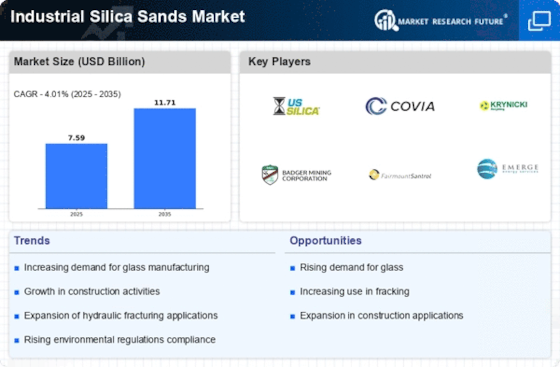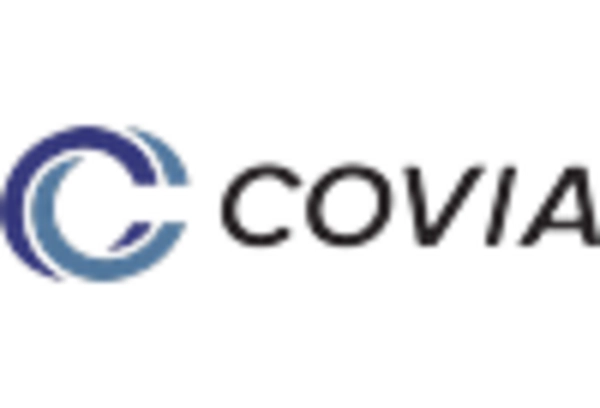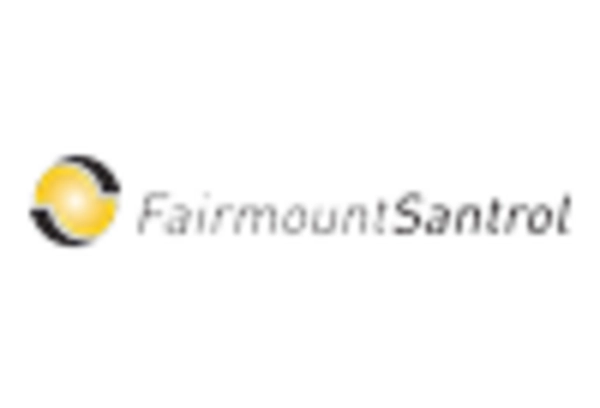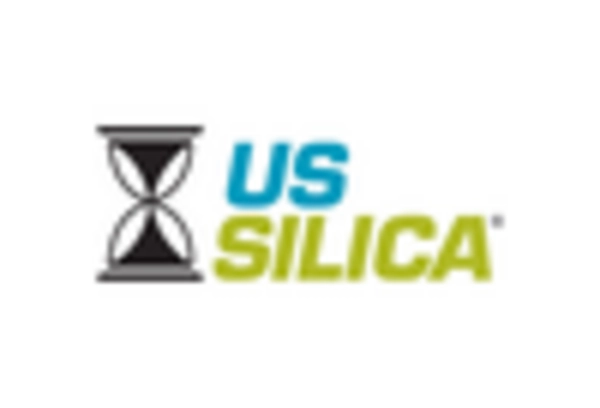Growth in Oil and Gas Sector
The oil and gas sector is a significant consumer of industrial silica sands, particularly in hydraulic fracturing processes. As energy demands continue to rise, the need for silica sands in fracking operations is expected to grow. In 2025, the Industrial Silica Sands Market may see increased activity as oil and gas companies seek to enhance extraction efficiency. Silica sands are crucial for creating proppants that keep fractures open, allowing for better oil and gas flow. This growing reliance on industrial silica sands in the energy sector could lead to a robust market environment, with potential for increased investments in silica sand production and processing facilities.
Expansion of Glass Manufacturing
The glass manufacturing industry is witnessing substantial growth, which is expected to positively impact the Industrial Silica Sands Market. Silica sands are a primary raw material in glass production, and as the demand for glass products increases, so does the need for high-purity silica sands. In 2025, the glass manufacturing sector is anticipated to expand due to rising consumer preferences for glass packaging and architectural glass. This expansion may lead to a projected increase in the consumption of industrial silica sands, as manufacturers seek to enhance the quality and performance of their glass products. Consequently, the Industrial Silica Sands Market is poised to capitalize on this trend, potentially leading to increased investments and innovations in silica sand extraction and processing.
Technological Innovations in Mining
Technological advancements in mining and processing techniques are transforming the Industrial Silica Sands Market. Innovations such as automated extraction methods and advanced sorting technologies are enhancing the efficiency and quality of silica sand production. These technologies not only reduce operational costs but also improve the purity of the final product, making it more appealing to various industries. As a result, the market is likely to witness an increase in production capacity and a reduction in environmental impact. In 2025, the adoption of these technologies may lead to a more competitive landscape, as companies strive to meet the growing demand for high-quality industrial silica sands while adhering to sustainability standards.
Rising Demand in Construction Sector
The construction sector is experiencing a notable surge in demand for industrial silica sands, primarily due to the increasing number of infrastructure projects. This trend is driven by urbanization and the need for residential and commercial buildings. In 2025, the construction industry is projected to consume a significant portion of industrial silica sands, as they are essential for concrete production and glass manufacturing. The Industrial Silica Sands Market is likely to benefit from this growth, as silica sands are integral to the production of high-quality construction materials. Furthermore, the emphasis on durable and sustainable building practices may further enhance the demand for industrial silica sands, as they contribute to the strength and longevity of construction materials.
Environmental Regulations and Sustainability
The Industrial Silica Sands Market is increasingly influenced by environmental regulations and sustainability initiatives. As industries face pressure to adopt eco-friendly practices, the demand for sustainably sourced silica sands is likely to rise. In 2025, companies that prioritize environmental stewardship may gain a competitive edge, as consumers and regulatory bodies favor products that minimize ecological impact. This shift could lead to innovations in extraction and processing methods that align with sustainability goals. Furthermore, the emphasis on recycling and reusing materials in various applications may create new opportunities for the industrial silica sands market, as industries seek to reduce their carbon footprint and enhance resource efficiency.

















Leave a Comment